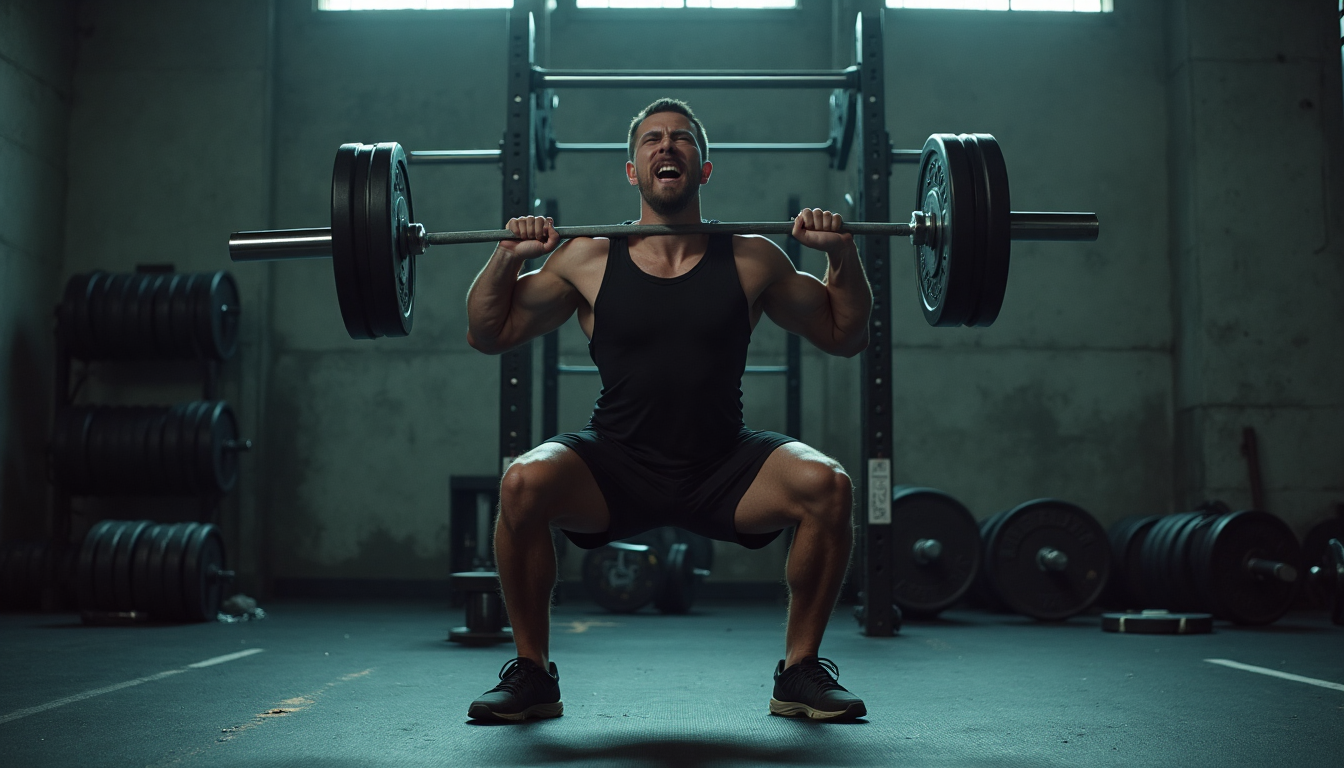Stop Chasing Glute Activation—Your Squat Needs Something Else

Stop Chasing Glute Activation—Your Squat Needs Something Else
I'll never forget the day I watched a powerlifter at my gym perform twenty perfect glute bridges with a 405lb barbell, then immediately struggle through squats with barely 225lbs. His glutes were clearly "activated"—whatever that means—but his squat looked like a newborn giraffe trying to walk.
That moment shattered everything I thought I knew about training.
For years, I'd been drinking the glute bridge Kool-Aid like everyone else. EMG studies showed massive glute activation! Instagram fitness influencers preached about "sleepy glutes"! The logic seemed bulletproof: stronger glutes in bridges = better squats, right?
Wrong. Dead wrong.
The Great Glute Activation Scam
Here's what nobody wants to admit: we've been sold a bill of goods. The fitness industry has convinced us that our glutes are these lazy, unmotivated muscles that need to be "woken up" through isolation exercises. But think about it—when's the last time you saw someone's glutes actually fail to fire during daily activities?
Your glutes aren't broken. Your movement patterns are.
The obsession with glute bridges stems from a fundamental misunderstanding of how the human body actually works. We've become so fixated on individual muscle activation that we've forgotten the forest for the trees. Your body doesn't think in terms of "glutes" and "quads"—it thinks in terms of movements, patterns, and coordinated actions.
When you perform a glute bridge, you're essentially teaching your nervous system a very specific skill: how to extend your hips while lying on your back with minimal systemic stress. That's it. Nothing more, nothing less.
Why Your Brain Doesn't Give a Damn About Your Bridges
Let me paint you a picture of what's really happening neurologically.
During a glute bridge, your nervous system is essentially taking a nap. You're lying down, fighting minimal gravity, with blood pressure low and stress minimal. It's like trying to learn how to drive by sitting in a parked car—sure, you can practice turning the wheel, but it's not preparing you for highway traffic.
Now contrast that with squatting under load. Your nervous system is in full crisis mode. Every muscle fiber from your toes to your eyebrows is receiving and processing information. Your brain is orchestrating an incredibly complex symphony of muscle activation, timing, and coordination—all while managing the very real threat of being crushed by weight.
In this high-stress environment, your brain defaults to whatever movement pattern feels safest and most efficient. If you've spent months teaching it that glute activation happens while lying down in a low-stress position, guess what? That skill doesn't transfer when you're standing upright with a barbell trying to fold you in half.
It's like learning to swim in a kiddie pool and expecting to handle ocean waves. The skills just don't translate.
The Movement Pattern Reality Check
Here's where things get really interesting. The mechanics of a glute bridge and a squat are about as similar as a bicycle and a motorcycle—sure, they both have wheels, but that's where the similarities end.
In a squat, your glutes are working through massive ranges of motion in all three planes. They're lengthening during the descent (getting stretched like a rubber band) and then explosively contracting during the ascent. This stretch-shortening cycle is absolutely critical for developing real-world strength and power.
But in a bridge? Your glutes start short and get shorter. There's no stretch, no elastic energy storage, and certainly no learning how to work from compromised positions. It's like practicing free throws from three feet away and expecting to nail them from the actual free-throw line.
I learned this the hard way during my competitive days. I was obsessed with accessory work, convinced that stronger individual muscles would automatically equal better performance. I had the strongest glute bridge in my weight class, but my squat plateau lasted eight frustrating months.
Know what finally broke through? I ditched 90% of my isolation work and started squatting more frequently with better movement patterns. Revolutionary, right?
The Lunge Revelation
If you're determined to use an assistance exercise (and I get it—sometimes you need that extra work), lunges are your answer. Not because some study said so, but because they actually make sense from a movement perspective.
Think about what happens in a lunge versus a bridge:
Lunge: You're upright, fighting gravity, learning to coordinate your entire kinetic chain while one leg moves through squat-like ranges of motion. Your ankle, knee, hip, and spine are all learning to work together under load.
Bridge: You're horizontal, isolated movement, no coordination required, completely different joint angles and stress patterns.
Which one sounds more like squatting to you?
I started programming lunges as my primary squat assistance about three years ago, and the results have been remarkable—not just for my own training, but for every athlete I coach. The carryover is immediate and obvious because you're actually practicing something that resembles squatting.
The Real Solution Nobody Talks About
Want to know the secret to better glute activation in your squat? It's going to sound crazy, but hear me out:
Squat more.
I know, I know. It's not sexy. It won't get you Instagram likes. There's no fancy equipment or complicated protocols. But here's the truth that the fitness industry doesn't want you to hear: the best way to get better at squatting is to practice squatting.
Your nervous system learns through repetition and specificity. If you want your glutes to fire properly during squats, you need to teach them through actual squatting movements. Not lying on your back doing bridges. Not standing on one leg doing clamshells. Squatting.
This doesn't mean loading up with maximum weight every session. It means practicing the movement pattern frequently, with various loads, tempos, and ranges of motion. It means teaching your body that squatting is a priority skill worth mastering.
A Better Way Forward
Here's my challenge to you: for the next month, replace your glute bridges with one of these alternatives:
- More squat variations: Front squats, pause squats, tempo squats, box squats
- Reverse lunges or Bulgarian split squats: Actually practice single-leg squat patterns
- Step-ups: Unilateral strength that transfers to bilateral movements
- Good mornings or RDLs: Hip hinge patterns that complement your squat
Track your progress. Pay attention to how your squat feels, looks, and performs. I'm willing to bet you'll see better results than months of bridge-and-grind sessions ever produced.
The Bottom Line
We've overcomplicated something that should be simple. Your body is designed to move as a coordinated unit, not as a collection of individual muscles that need to be awakened from their supposed slumber.
The fitness industry has convinced us that we're broken and need fixing through isolation exercises. But what if we're not broken? What if we just need to practice the actual skills we want to improve?
Stop chasing high EMG readings and start chasing better movement. Your squat—and your sanity—will thank you.
What's your experience been with glute bridges and squat performance? Have you noticed actual carryover, or are you ready to try a different approach? Let me know in the comments—I read every single one.
And if this article challenged your thinking, share it with that friend who's still doing endless glute activation warm-ups before every squat session. They'll either thank you or never speak to you again. Either way, you're doing them a favor.




